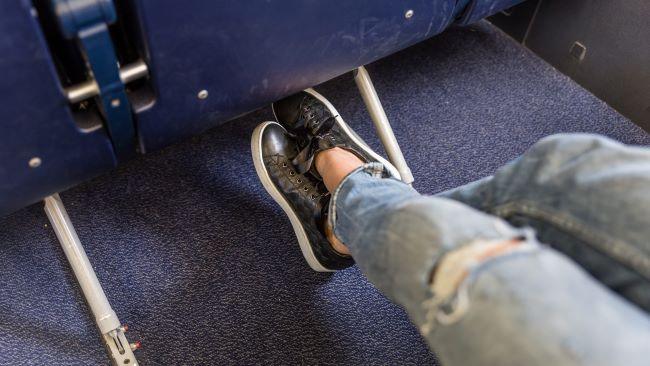Have you ever noticed your ankles and feet feeling puffy and tight after a flight? This common phenomenon, known as edema, is caused by fluid buildup in your body’s tissues. While it can be uncomfortable, understanding why it happens and taking a few simple steps can help you travel more comfortably.

The Science Behind Flight Swelling
The primary reason for swollen ankles during flights relates to your lymphatic system, which acts like a drainage network for your body. According to Linda Hodgkins, an occupational therapist and lymphedema expert at Hartford HealthCare, changes in cabin air pressure during flights play a significant role.
“For most people, changes in atmospheric pressure on a flight are not a problem because the system can handle it well. For other people, their systems can be a bit sluggish, and they can have some difficulty handling this excess fluid,” Hodgkins explains.
Essentially, the reduced air pressure at higher altitudes can make it harder for your body to circulate fluids efficiently. This effect is compounded by prolonged periods of sitting. Inactivity during long flights means your calf muscles, which normally help pump fluids from your legs back to your heart, are less engaged. This can lead to fluid pooling in your lower extremities, resulting in swelling.
Certain pre-existing conditions can also increase your susceptibility to flight-related swelling. Individuals with diabetes or recent injuries, such as a sprained ankle, might experience more pronounced edema when flying.
Simple Yet Effective Tips to Combat Swollen Ankles
Fortunately, managing and preventing swollen ankles during air travel doesn’t require drastic measures. Here are three actionable tips to incorporate into your travel routine:
1. Stay Active In-Flight
Combating inactivity is key. Aim to move your muscles every 15 to 20 minutes while flying. Simple exercises can make a significant difference. Try marching in place in your seat or performing ankle rotations.
Hodgkins emphasizes the importance of calf muscle engagement: “During normal movement, your calf muscles contract and relax, working almost like a heartbeat to push fluid out of your legs.” Regular movement helps counteract fluid buildup caused by prolonged sitting and promotes better circulation.
2. Plan Your Flights Strategically
Consider your itinerary when booking flights. Shorter flights generally involve lower altitudes and, consequently, less atmospheric pressure change. If possible, opt for shorter journeys to minimize the pressure-related effects on your lymphatic system.
Additionally, what you consume during your flight matters. Pack healthy, low-sodium snacks. High sodium intake can contribute to fluid retention, exacerbating swelling. Staying hydrated and choosing snacks like fruits, vegetables, and nuts can help regulate fluid balance and blood pressure.
3. Utilize Compression Socks
Compression socks are a valuable tool in preventing excessive fluid accumulation in your legs. These specialized socks improve blood circulation by applying graduated pressure, being tighter at the ankles and gradually loosening as they extend up the leg.
This graduated compression assists in pushing fluids upwards, preventing them from pooling in your lower legs and ankles. Wearing compression socks during flights can significantly reduce swelling and discomfort.
When to Consult a Healthcare Professional
While flight-related swelling is usually temporary and resolves on its own, persistent or excessive swelling warrants medical attention. If you consistently experience swollen ankles, or if the swelling lingers for an extended period after flying, it’s advisable to seek expert advice.
An edema therapist can provide personalized guidance, including recommendations for compression socks and strategies for managing swelling. Importantly, they can also assess whether your swelling might be indicative of an underlying chronic condition.
“When you notice consistent swelling, we recommend you see an edema therapist because it can be the very beginning of a chronic condition,” advises Hodgkins. Early intervention is crucial, as addressing lymphatic drainage issues in their initial stages can be more effective in preventing long-term complications.
By understanding the causes of swollen ankles during flights and implementing these preventative measures, you can enhance your travel experience and arrive at your destination feeling more refreshed and comfortable.
